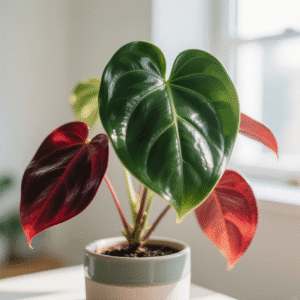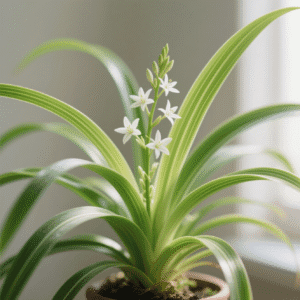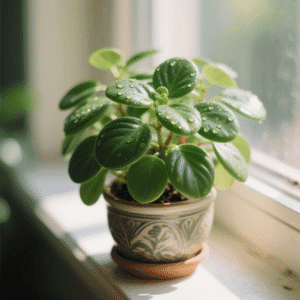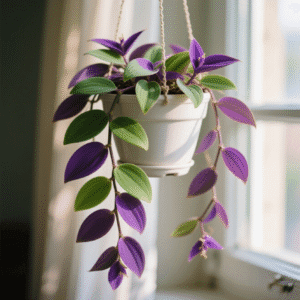How to Propagate Houseplants in Water: Step-by-Step Guide for Beginners
You’ve seen it on social media: clear jars full of water, stems with tiny white roots growing like magic. It looks simple. Beautiful. Almost too good to be true.
And you wonder: can I really grow new plants from a single leaf or stem?
The answer is yes. Propagating houseplants in water is one of the easiest, most rewarding ways to grow your collection—for free.
In this step-by-step guide, I’ll show you exactly how to do it: which plants work, how to cut them, when to change the water, and how to transition to soil.
No guesswork. No failed attempts. Just clear, proven steps that work—whether you’re a total beginner or a seasoned plant lover.
📚 Table of Contents
- Why Propagate Houseplants in Water?
- Best Plants to Propagate in Water
- Step-by-Step: How to Propagate in Water
- When to Pot in Soil
- Common Problems & How to Fix Them
- Advanced Tips for Faster, Healthier Roots
- FAQ: Your Top Questions Answered
Why Propagate Houseplants in Water?
Water propagation is simple, visual, and forgiving. You can see the roots grow in real time.
It’s perfect for: – Beginners – Kids – Sharing plants with friends – Reviving leggy or overgrown plants
And the best part? It costs nothing. Just a glass, some water, and a healthy stem.
Plus, it’s deeply satisfying. Watching a tiny root emerge from a cutting feels like magic—but it’s science, patience, and care.
🔬 Fun fact: Some plants, like Pothos, can live in water indefinitely with proper care and nutrients.
Best Plants to Propagate in Water
Not all plants root in water. Stick to these proven winners:
1. Pothos (Epipremnum aureum)

The gold standard of water propagation. Fast-growing, reliable, and beautiful.
Roots in: 1–2 weeks
Success rate: 95%+
Tips: Cut just below a node. Remove lower leaves.
2. Philodendron (Heartleaf, Red Princess)

Similar to Pothos, but with a softer texture. Roots quickly.
Roots in: 2–3 weeks
Success rate: 90%
Tips: Use a clear jar to monitor root growth.
3. Spider Plant (Chlorophytum comosum)

Produces “pups” that root easily in water.
Roots in: 2–4 weeks
Success rate: 85%
Tips: Wait until pups have small roots before cutting.
4. Peperomia

Compact, with thick leaves. Can be propagated from leaf or stem.
Roots in: 3–6 weeks
Success rate: 70%
Tips: Use bottom heat to speed up rooting.
5. Lucky Bamboo (Dracaena sanderiana)

Not a true bamboo, but grows beautifully in water.
Roots in: 4–6 weeks
Success rate: 80%
Tips: Change water weekly. Use pebbles for support.
6. Tradescantia (Wandering Jew)

Vibrant colors, fast-growing. One of the easiest to propagate.
Roots in: 1–2 weeks
Success rate: 90%
Tips: Pinch tips to encourage bushiness.
7. Monstera (with node)

Iconic split leaves. Must have a node to root.
Roots in: 3–5 weeks
Success rate: 75%
Tips: Use a stake in water to support the cutting.
| Plant | Roots in | Success Rate | Pet-Safe? |
|---|---|---|---|
| Pothos | 1–2 weeks | 95% | ❌ No |
| Philodendron | 2–3 weeks | 90% | ❌ No |
| Spider Plant | 2–4 weeks | 85% | ✅ Yes |
| Peperomia | 3–6 weeks | 70% | ✅ Yes |
Plants to avoid: Succulents, cacti, snake plant, ZZ plant (they rot in water).
Step-by-Step: How to Propagate in Water
- Choose a healthy stem with at least one node (bump where roots grow).
- Cut just below the node with clean, sharp scissors or shears.
- Remove lower leaves to prevent rot in water.
- Place in a jar of room-temperature water (tap water is fine, but let it sit 24h to remove chlorine).
- Put in bright, indirect light (not direct sun, which can overheat water).
- Change water every 7–10 days to prevent bacteria and algae.
- Wait 2–6 weeks for roots to grow 1–2 inches.
💧 Pro tip: Add a drop of liquid fertilizer (like Dyna-Gro) every 2–3 water changes to boost growth.
When to Pot in Soil
Don’t wait too long. Once roots are 1–2 inches long, pot in well-draining soil.
- Use a small pot with drainage holes.
- Use a mix of potting soil and perlite (2:1).
- Water lightly after transplanting.
- Keep in humid, shaded spot for 1–2 weeks to reduce shock.
Some plants (like pothos) can live in water indefinitely, but they grow stronger in soil.
Common Problems & How to Fix Them
- Stem rot: Change water, cut above rot, use clean tools. Prevent by removing submerged leaves.
- No roots: Ensure there’s a node. Be patient—some take 6 weeks. Add a drop of fertilizer.
- Algae in water: Use opaque jar or change water more often. Avoid direct sunlight.
- Yellow leaves: Normal for older leaves. Remove if unsightly.
- Weak roots: Add liquid fertilizer. Use a heat mat if room is cold.
Advanced Tips for Faster, Healthier Roots
- Use rooting hormone (optional) to speed up root development.
- Add a piece of charcoal to water to inhibit bacteria.
- Use a heat mat (70–75°F) to stimulate root growth.
- Label your jars with plant name and date.
- Use distilled or rainwater if your tap water is high in fluoride or chlorine.
These small tricks can make a big difference in success rate.
FAQ: Your Top Questions Answered
Q: Do I need rooting hormone?
R: Not necessary, but it can speed up the process, especially for slow growers like Peperomia.
Q: Can I propagate a leaf only?
R: Only for certain plants (e.g., Peperomia, African Violet). Most need a stem with node.
Q: How long does it take?
R: 2–6 weeks, depending on plant and conditions.
Q: Can I propagate in tap water?
R: Yes, but let it sit 24h to remove chlorine. Avoid softened water.
Q: Why is my cutting turning brown?
R: Likely rot. Cut above the damage and start over.
Q: Can I propagate variegated plants?
R: Yes! But ensure the cutting has variegated tissue, or it may revert to green.
Q: Should I cover the jar?
R: No. Roots need oxygen. Keep open to allow gas exchange.
Propagation isn’t just gardening. It’s hope. Life. Connection. And it all starts with one snip. ✂️🌱








Aw, this was an exceptionally nice post. Spending some time and actual
effort to make a top notch article… but what can I say… I procrastinate a lot and never
seem to get nearly anything done.